A pilgrim-walking route, linking Cashel in County Tipperary and Ardmore in County Waterford, follows the trail of St. Declan who, in the late 5th century, left his monastery in Waterford to walk to Cashel to meet with future patron saint, Patrick.
Ireland’s south east, celebrated for its historical Viking ties and impressive hurling record, now has another claim to fame: St. Declan’s Way.
St. Declan, meaning “man of prayer” or “full of goodness”, is said to have brought Christianity to Ireland before St. Patrick had even set foot on the Emerald Isle.
He is among four of the Munster saints and is known for converting the Déisi, a designated group of people who paid rent to landowners at the time. St. Declan founded the Monastery of Ardmore on the edge of Waterford, which he called “a narrow place beside the sea”.
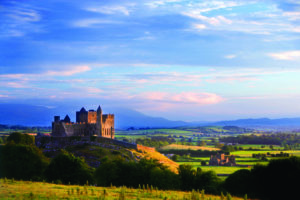
In the fifth century, St. Declan began the first of many long pilgrimages to meet St. Patrick at Cashel, Co. Tipperary. The route he is thought to have taken is commemorated today as St. Declan’s Way. Most walkers begin at the Rock of Cashel and conclude at Ardmore in Co. Waterford, the resting place of St. Declan. Unlike St. Declan, however, the return journey is not a requirement.
St. Declan’s Way was first developed as a walking trail in the 1990s but fell into disrepair a decade later. The St. Declan’s Way Committee, a voluntary organization, was set up to “revive and reopen” the trail, said committee chair Conor Ryan.
“There was still an interest in the trail from tourists. People were going into the tourist offices and asking about it. There was an old map of it still in circulation,” Ryan told Irish America.
The committee was formed ten years ago, headed mainly by two organizations, Knockmealdown Active and Knockmealdown Forum. The main objective was to make the route accessible for self-navigation. Ryan credits vital funding from the Irish government’s Outdoor Recreation Infrastructure Scheme in achieving this goal.
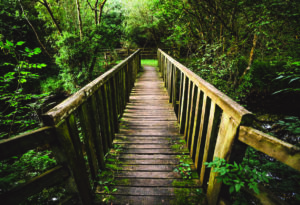
Despite a quiet tourist season due to the pandemic the route has received a lot of interest. In the wake of countless business closures across the country, the walk is a welcome boost to tourism said Ryan. “The reason why we opened it was to get boots on the ground and get people into towns like Lismore and Cappoquin, staying locally and visiting shops.”
IInterest in pilgrimage walks continues to rise in recent years and Ryan jokes that if St. Declan’s Way sees even a fraction of the footfall of the Spanish Camino it would be a success. Of course, many people have already embarked on the trek and enjoyed the many heritage stops along the way.
Beginning in the shadow of the famous Rock of Cashel, once the seat of the Kings of Munster, the route weaves across an impressive 72 miles before it stops just short of the silvery sea.
If you find yourself embarking on this remarkable endeavor, you can expect to see Ireland’s history unfold before your eyes. In South Tipperary, the profile of Cahir Castle will soon stand out against the luscious green landscape. A thirteenth century stronghold, Cahir Castle has a bloodied history from sieges to family feuds.
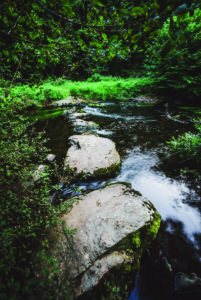
The next sight to roll out in front of you as you make your way across Ireland’s countryside, is the small town of Ardfinnan, nestled at the foot of Fíonáin’s Height, another castle, for which the town is named. Ardfinnan has a storied history including a former abbey erected by its namesake St Finian, who was named “Lobhar” meaning “the leper” after he was rumored to have cured a young boy of the disease. The abbey housed a leper colony and decades later it was plundered and burned during the Norman Invasion.
The path parallels along the banks of the weaving River Suir where it forms a valley at the town of Goatenbridge. Surrounded by the mountain regions of the Comeraghs, the Knockmealdowns, Slievenamon and the Galtees, Goatenbridge finds itself located in a natural amphitheater of beauty.
As you depart Tipperary, West Waterford will rise around you as you cross the hilly terrain and take in the vast landscape of the Crystal County.
Even the mountains tell the tales of Ireland’s past. Such as the Knockmealdowns, where, in 1923, Liam Lynch chief-of-staff of the Irish Republican army was fatally shot during an ambush by the National Army. A monument commemorating Lynch stands along the route and will serve as a guide through the mountains.

And if the long and winding road through Ireland’s glorious peaks proves tiring, rest your weary head at a hostel along the route in Mount Melleray, Ireland’s oldest living monastery. Keeping in tradition with monks, the hostel has been welcoming tourists and offering them a place to rest since it opened earlier this year.
After a well-deserved break, wander along the banks of the River Blackwater where you can visit the historic town of Lismore. The Waterford town offers various heritage sites such as a medieval cathedral and a castle with grounds open to the public.
Offering even more historic houses and grounds is the town of Cappoquin. A house named in honor of the town was built on the site of a former castle in the 1770s and was renovated after it was burned out during the Civil War in 1923. The house’s magnificent gardens and grounds are open to the public. The Dromana House,
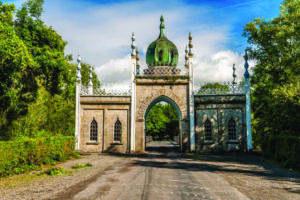
however, is still occupied after over 700 years but the accompanying Dromana Bridge is publicly owned and is part of the camino. Walkers will venture down the historic avenue and through a beautiful Hindu Gothic gate dating from around 1830, the only of its kind in Ireland.
And finally, after a brief venture through the small village of Aglish the air will soon begin to taste of the salty sea that will symbolize the finish line for those undertaking the pilgrimage. As the round tower of Ardmore appears on the horizon, get ready to take in the final historic sites of St. Declan’s Way, including the resting place of St. Declan himself.
As the old Irish saying goes, “Go n-éirí an bóthar leat” or “let the road rise to meet you.”♦
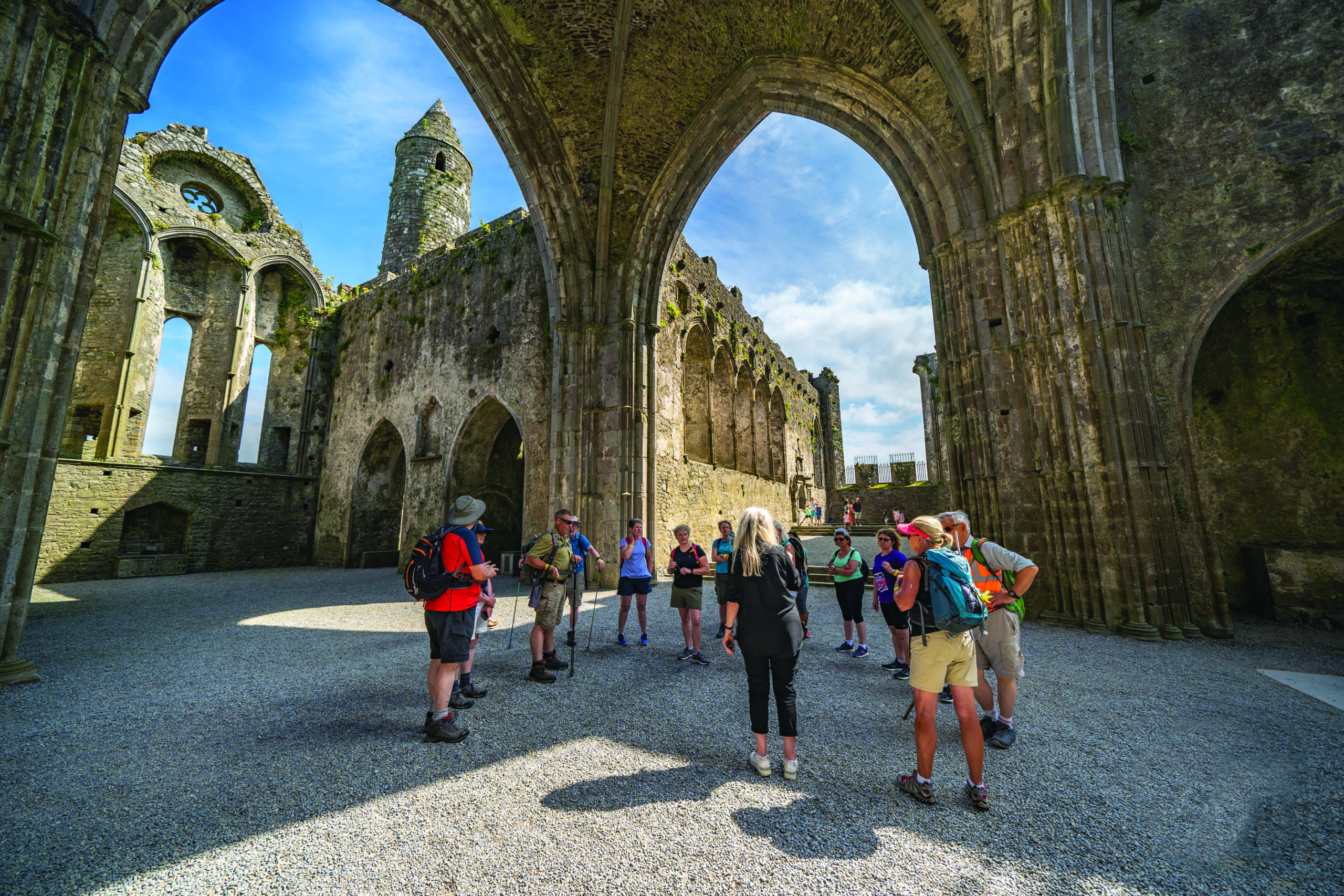
Who Was St. Declan of Ardmore?
Born early in the 5th Century, St. Declan was from county Waterford in the province of Munster (Clare, Cork, Kerry, Limerick, Tipperary, and Waterford). He was a prince in the royal – and pagan – house of the Déisi Muman (Déisi of Munster).
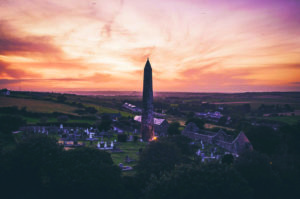
The Déisi could be described, alternately, as a socially prominent clan or an extended family that had a mystical bond with fellow members in Gaul, Scotland, and Wales.
Miracles, manifest throughout Declan’s life, beginning at his birth when a ball of fire appeared on the roof of his house, then blazed to the heavens. One witness, St. Colman, a local Christian bishop with the gift of prophesy, baptized Declan immediately, knowing this was a sign the pagan newborn would spend his life in sanctity and devotion, he was God’s chosen child. The prophecy came to pass, Declan indeed proved to be God’s chosen one.
After studying in Ireland with St. Colman, Declan went to Rome where the pope, too, recognized his sanctity and anointed him a bishop. Traveling on a road in Rome, he met Patrick; as they parted, they bade farewell making a bond of mutual fraternity and kissed in token of peace. The two met again, most historically, in Cashel when Declan made the long odyssey from his home in Ardmore to meet Patrick.
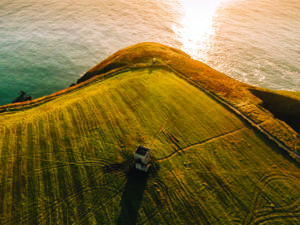
Patrick stayed in Rome but the pope sent Declan home to Ireland to preach the gospel in his native land. He established his church in Ardmore, converting the pagans in Munster, even winning over the elitist Déisi. Word of his miracles spread and his Déisi lineage earned him more converts in Gaul and Wales.
Before the Briton, Patrick, ever set foot in Ireland, Declan founded monasteries and churches debunking the narrative that Ireland’s patron saint was its sole apostle. In fact, most of Patrick’s ministry was in the North; and a century of robust propaganda from Armagh bolstered the cult of Armagh’s own bishop (Patrick), catapulting him to lasting (and worldwide) fame.
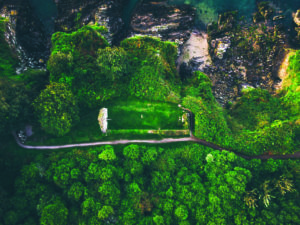
This allowed Declan, the deeply venerated saint and miracle worker from the south, to fade from public consciousness as the northern church rose to prominence. He’s in very few saint anthologies and Catholics, outside of Ireland, are not familiar with him and other pre-Patrician saints, Colman, Ailbe, Cierán and Ireland’s first bishop, Palladius.
Now this magnificent and munificent saint – beggars followed him wherever he went – will be honored much as St. James is in Spain (a country the disciple never visited). The Way of St. James or Camino de Santiago provided the template for St. Declan’s Way, a pilgrim walking route linking Cashel in County Tipperary and Ardmore in County Waterford. It honors St. Declan’s history while tracing the route of his 55-mile trek to meet Patrick in Cashel. St. Declan was hardly in his prime when he made the journey giving lots of inspiration to those who walk the “Irish Camino.” – By Rosemary Rogers

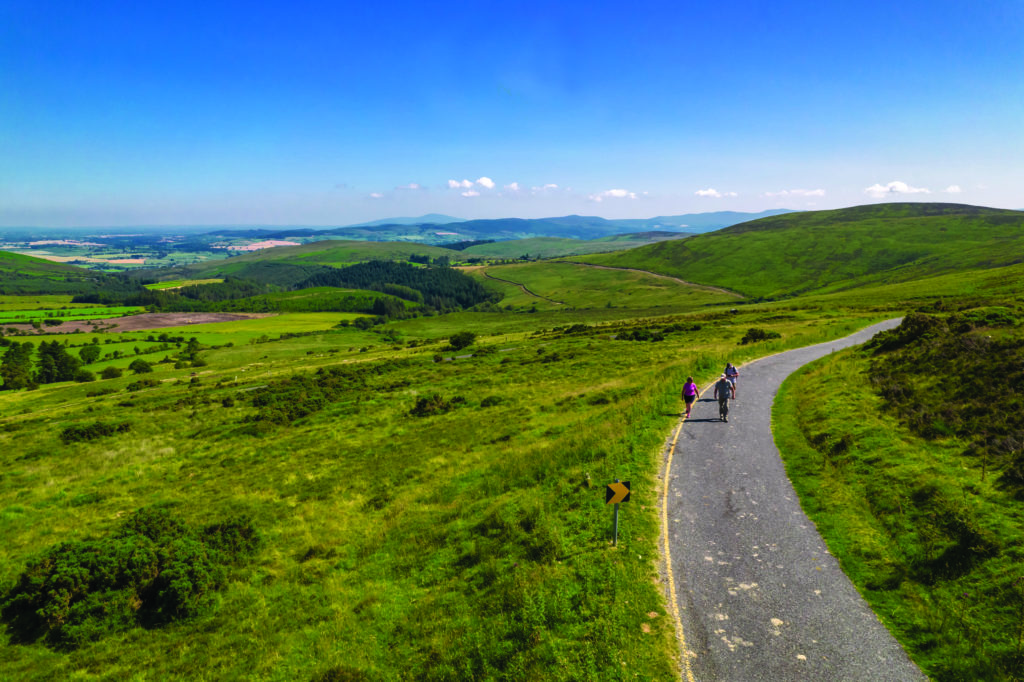
Leave a Reply